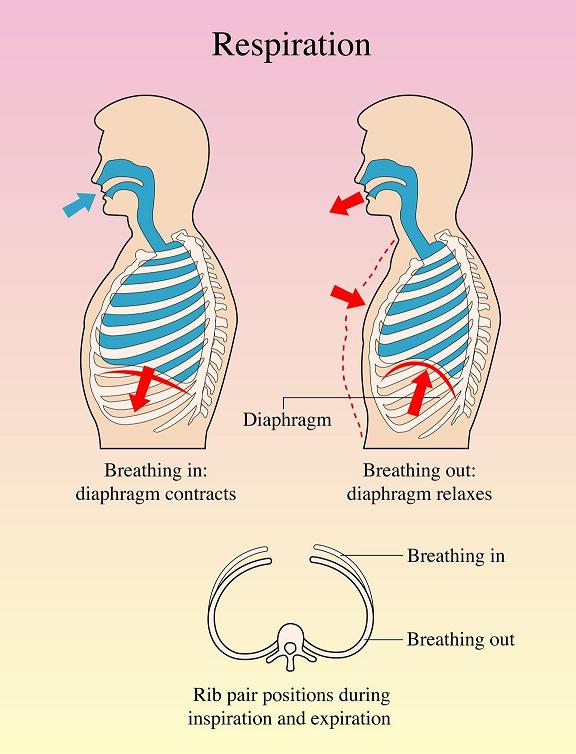Respiration Myths, Norms and Reality
How long can cells survive without oxygen and breathing?
The brain can survive less than three minutes without oxygen. Kidneys and liver: 15-20 minutes. Skeletal muscle: 60-90 minutes. Vascular smooth muscle: 24-72 hours. Hair and nails: several days.
One of the greatest myths of modern times is that “breathing more air provides more oxygen”. Medical science suggests that the opposite is true: slower and less breathing increases body O2.
We can increase body O2 content and solve problems with a stuffy nose fast with a simple breathing exercise.
Normal parameters of respiratory lung volumes
VC – Vital capacity: difference between the maximum inhalation and the maximum exhalation – 4,800 mL
ERV – Expiratory reserve volume: the air volume which can be exhaled after a normal exhalation – 1,200 mL
IC – Inspiratory capacity: the difference between maximum lung volume and a normal exhalation – 3,600 mL
RV – Residual volume: the air volume left in the lungs at the full exhalation – 1,200 mL
TLC – Total lung capacity: the maximum air volume in the lungs at the full inhalation – 6,000 mL
FRC – Functional residual capacity: volume of air in the lungs at a normal exhalation – 2,400 mL
Vt – Tidal volume: the air volume breathed in during a single breath – 500 mL
Rf – Normal respiratory rate or frequency: a number of breathing cycles per minute – 12 breaths per min
V – Minute volume: the air volume breathed in and out during 1 minute – 6,000 mL per min
VA – Alveolar ventilation: the air volume breathed in and out of the alveolar space in 1 minute – 4,200 mL per minute
Vd – Dead space volume: the air volume in airways that does not exchange its oxygen with the blood – 150-200 mL
MVV – Maximum voluntary ventilation: the largest air volume that can be moved out of the lungs in 1 minute by voluntary efforts – 170 L per minute
FEV – Forced expiratory volume: the air volume that can be forcefully expired in 1 or 3 seconds divided by the vital capacity – 83% or 97%, respectively
Maximum inspiratory and expiratory pressures: the maximum pressure gradient that can be voluntary created between the lungs and the outer air – 60-100 mm Hg
Maximum work of breathing: the maximum amount of energy that can be spent on breathing – 10 kg*m per minute
Work of quiet breathing: the amount of energy spent on breathing at the state of rest – 0.5 kg*m per minute.
For more information about breathing, click this link (Wikipedia). For most advanced clinical research and methods to treat chronic diseases, you need to see www.NormalBreathing.com. This site features most successful ever-known clinical trials on cancer, asthma, hepatitis B, liver cirrhosis, and many other conditions using … one special breathing technique.
For those who are interested in sports and enhancing sport performance, consider this review of the Training Mask, a breathing device that boosts body oxygen levels by creating light hypoxia and hypercapnia.


